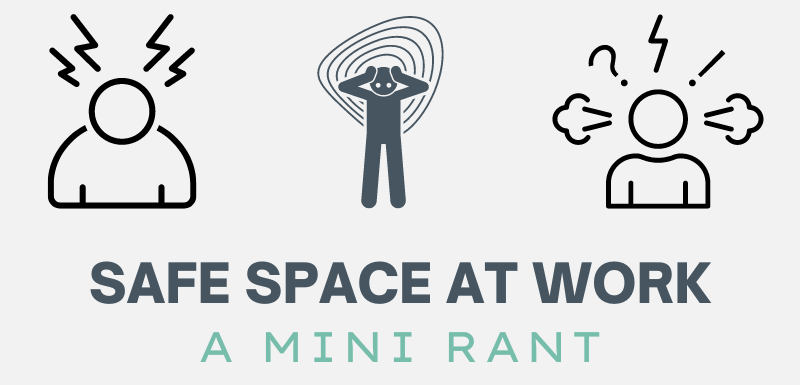Employers, directors, and others often claim that they provide a “safe space” for their employees.
I hear this all the time. And it irks me.
Because nobody can define what’s safe for someone else. Individuals carry trauma, anxieties, and experiences that aren’t visible and, consequently, nobody can claim they create safe space for everyone. Claiming a safe space, in fact, can be a painful reminder of the oppression and marginalization many people experience on a daily basis.
Recently, I’ve noticed that some people are critiquing the notion of a safe space and have started to use the term “brave space” as a substitute. At first, I was intrigued. But, then I realize that we can’t thrust that on anyone either. A brave space requires someone to be vulnerable and exposed — and I’m having trouble distinguishing the felt differences between brave and safe spaces. According to Arao and Clemens (2022), the linguistic shift can be helpful. I’m not yet convinced.
In a panel I attended recently, a panelist said “If the space doesn’t require me to be brave, then it’s safe”. Well said. I interpret that to mean that, “if I can express myself openly without fear, then you’ve been successful in creating a safe space”.
What is a safe space?
A safe space has been described as an environment in which people feel comfortable expressing themselves and participating fully, without denial of experience, or fear of attack and ridicule.
A related concept, and one that is especially relevant in the workplace, is that of team psychological safety, or “a shared belief held by members of a team that it’s OK to take risks, to express their ideas and concerns, to speak up with questions, and to admit mistakes — all without fear of negative consequences.”
Some benefits of team psychological safety at work
Within a workplace, the concept of team psychological safety is important. First, because it promotes engagement and fosters motivation among team members who feel that their contributions matter and that they can speak up without fear of reprisal. Second, it enhances decision-making by encouraging diverse viewpoints and ensuring all concerns are heard and considered. Third, it cultivates a culture of ongoing learning and growth when team members are ease sharing their mistakes and gaining insights from them. Engagement, decision-making, and growth — those are important factors to a positive work environment.
Characteristics of a psychologically safe work environment
In a psychologically safe work environment, employees:
- feel that their colleagues will not reject people for being themselves
- trust that they will not be rejected for saying what they think
- feel secure to experiment and take risks
- have respect each other’s competence
- are interested in each other as people
- have positive intentions to one another
- can engage in constructive conflict
(Newman et al, 2017).
My point is…
If you work in a place where there are claims of “safety” and that doesn’t sit well with you, good on you. It probably shouldn’t, because it’s a false claim.
If you’ve been stating you create a safe space in any aspect of your work, please pause and question that claim. You CAN (we all can) create to a positive work culture –and please continue to do that we are need one of those. The good news is there are countless ways each of us can do that.
References:
Arao, B., & Clemens, K. (2023). From safe spaces to brave spaces: A new way to frame dialogue around diversity and social justice. In The art of effective facilitation (pp. 135-150). Routledge.
Newman, A., Donohue, R., & Eva, N. (2017). Psychological safety: A systematic review of the literature. Human resource management review, 27(3), 521-535.


